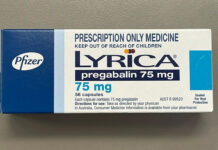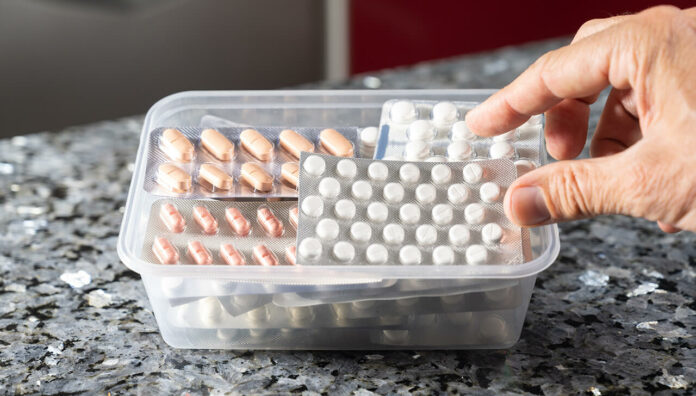It’s been a tough winter, with a potent soup of respiratory viruses comprising respiratory syncytial virus (RSV), new COVID-19 variants, influenza A and pertussis striking down many a patient, likely to seek symptomatic relief through their local community pharmacy.
But fresh concerns have been raised about a common active ingredient in over-the-counter (OTC) cold and flu products – phenylephrine.
Last year, the US Food and Drug Administration’s (FDA’s) independent Nonprescription Drugs Advisory Committee concluded that phenylephrine ‘doesn’t work’ as a decongestant when ingested orally as a tablet, capsule or liquid.
Yet investigations into its efficacy as an oral formulation have been ‘bubbling away for quite a while,’ said Professor Andrew McLachlan FPS, Dean of Pharmacy at the University of Sydney.
‘The evidence suggests that taking oral phenylephrine is no more effective than a placebo in reducing symptoms,’ he said.
How did phenylephrine become the decongestant of choice?
Initially, there were three OTC decongestants available in the pharmacopoeia, said Prof McLachlan, citing a 2022 paper questioning oral phenylephrine’s place in the market – co-authored by pharmacology researcher Randy Hatton, who has been looking into phenylephrine’s efficacy as an oral decongestant for 2 decades.
‘There was phenylpropanolamine, which came off the market years ago because it led to cardiovascular problems, and pseudoephedrine, which is now restricted because of the risk of diversion and its use as a chemical precursor in the synthesis of stimulants,’ he said.
That leaves phenylephrine, readily available as a Schedule 2 medicine, and now the most common active ingredient in orally administered products for nasal and sinus symptoms.
However phenylephrine, is, in effect, useless as a decongestant when taken orally. ‘Turns out that phenylephrine is very poorly absorbed after oral administration and does not achieve pharmacologically active concentrations in the bloodstream,’ said Prof McLachlan.
Why is it still available?
In short, oral decongestant formulations containing phenylephrine have not been removed by the Therapeutic Goods Administrations (TGA).
While aware that the FDA’s Nonprescription Drugs Advisory Committee discussed the available efficacy data for oral phenylephrine used as a nasal decongestant and whether it should be reclassified from being ‘Generally Recognized as Safe and Effective (GRASE)’ due to its efficacy, a TGA spokesperson told Australian Pharmacist that the TGA is not aware of any safety concerns identified by the FDA, nor a decision that phenylephrine is ineffective.
‘At this time, the TGA has no plans to conduct a review of the effectiveness of oral phenylephrine but will continue to monitor the outcomes of the FDA review,’ said the spokesperson.
‘Phenylephrine has a long history of use in cough and cold medicines and its safety and efficacy has been documented in standard reference texts. However, the perceived effectiveness of medications indicated to relieve symptoms such as nasal congestion can vary between individuals.’ (Click here to read the full TGA statement.)
While they won’t necessarily clear a stuffy nose, combination products containing phenylephrine that are orally ingested can still have an effect on other cold and flu symptoms.
‘When phenylephrine is combined in products that have other ingredients such as ibuprofen or paracetamol, it can help with pain and fever,’ said Prof McLachlan. ‘But phenylephrine itself does not have any effect.’
What decongestant formulations work?
Following an assessment, Prof McLachlan said the recommended decongestant formulation should be based on:
- what are the patient’s main upper respiratory symptoms?
- what has worked for the patient in the past?
- other medicines they are taking
- other health problems or conditions.
These days, most pharmacists would likely lean towards a topical product, such as a decongestant spray to open up the airways, said Prof McLachlan.
‘This constricts the blood vessels in the nose, which dilate in response to a trigger – whether virus or allergen related – to stop congestion, allowing you to breathe more easily,’ he said.
When topically applied, phenylephrine can be an effective decongestant.
‘phenylephrine, is, in effect, useless as a decongestant when taken orally.’
‘When applied directly to the nose, such as a drop or nasal installation, phenylephrine is a good decongestant and likely to reduce symptoms,’ said Prof McLachlan.
There’s also ‘good evidence’ to suggest that orally administered pseudoephedrine is an effective decongestant.
‘However, if the person is older and has hypertension or heart failure, pseudoephedrine may not be a good choice,’ he said. ‘Or they might recommend its use, but only for a few days.’
But given it is a more effective oral decongestant than phenylephrine, pharmacy teams need to find ways to routinely discuss pseudoephedrine when patients self-select Schedule 2 PE products.
Any recommendation that comes out of the pharmacy is the responsibility of the pharmacist, said Prof McLachlan.
That includes supporting pharmacy staff to know what the right choices are and when to refer to the pharmacist.
‘The “what-stop-go” idea of being able to say “what are the symptoms presented, what are their treatment options, and refer to the pharmacist or make a product selection” is important to appreciate,’ he said.
What are pharmacists’ ethical responsibilities?
Despite phenylephrine’s widespread availability and approval for use by the TGA, PSA’s Code of Ethics for Pharmacists clearly states that pharmacists should not recommend or support medicines that have no evidence of efficacy.
Pharmacists are expected to:
- promote the safe, judicious and efficacious use of medicines , and prevent the supply of unnecessary and/or excessive quantities of medicines, or any product which may cause harm
- before recommending a therapeutic product, consider available evidence and support the patient to make an informed choice and only supply a product when satisfied that it is appropriate and the person understands how to use it correctly
- only purchase, supply or promote any medicine, complementary medicine, herbal remedy or other healthcare product where there is credible evidence of efficacy and the benefit of use outweighs the risk.
This should be taken into account in decisions to stock all products available in pharmacies, including phenylephrine.
What are the other treatment options?
Decongestants are just one therapeutic option to help patients get through the 2024 winter.
‘[They might have] other head cold symptoms such as headache, and/or viral symptoms such as lethargy and fever – so a combination product with ibuprofen or paracetamol would be helpful,’ said Prof McLachlan.
Other general advice includes bedrest, fluid intake, and nutrition to aid recovery, along with taking measures to minimise the spread of infection to others.
These days, it’s also a lot easier for pharmacists to screen patients for respiratory conditions with point-of-care rapid antigen testing (RAT) to establish different viral infections.
‘In conversations about symptom management, appropriate triage of the underlying health problem by asking “have you done a RAT to know if you have COVID-19, influenza A or RSV?” can be very important as well,’ he said.
COVID-19, influenza, pertussis and RSV vaccination should also be recommended to the indicated demographic for prevention and to reduce the severity of symptoms.
Importantly, pharmacists are crucial in the fight against antimicrobial resistance by imparting the message that antibiotics are not always needed.
‘There was a time when if people had any respiratory symptom, they would think they needed an antibiotic,’ said Prof McLachlan. ‘But we know that for many viral infections, antibiotics are not helpful, they can lead to resistance and they won’t change the course of that illness.’



 Professor Margie Danchin[/caption]
Professor Margie Danchin[/caption]

 Dr Peter Tenni[/caption]
Dr Peter Tenni[/caption]
 How should we deprescribe gabapentinoids, according to the Maudsley Deprescribing Guidelines[/caption]
How should we deprescribe gabapentinoids, according to the Maudsley Deprescribing Guidelines[/caption]



 Pharmacists have always prescribed, but they have the potential to prescribe much more
Pharmacists have always prescribed, but they have the potential to prescribe much more




